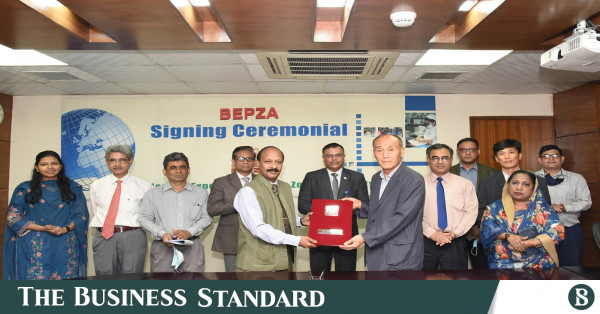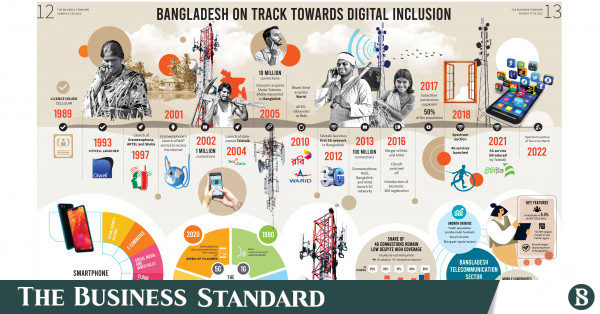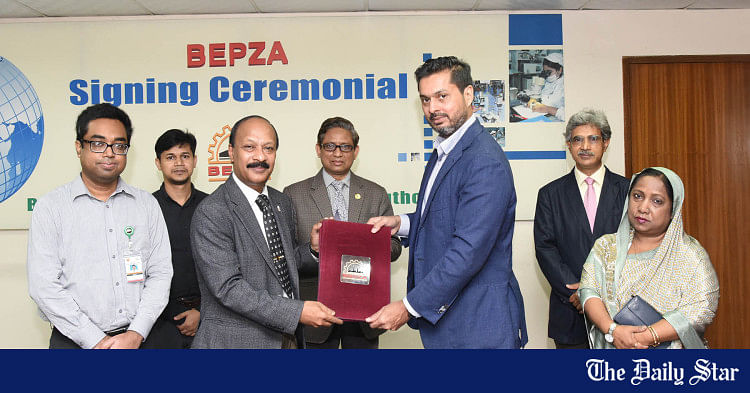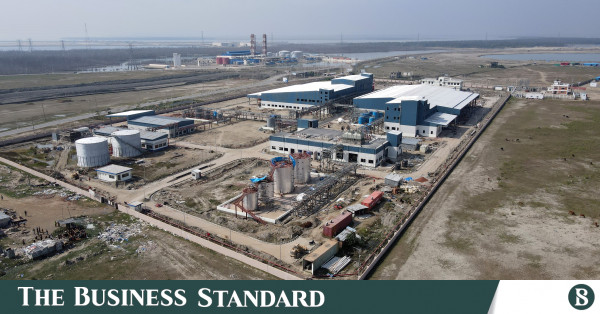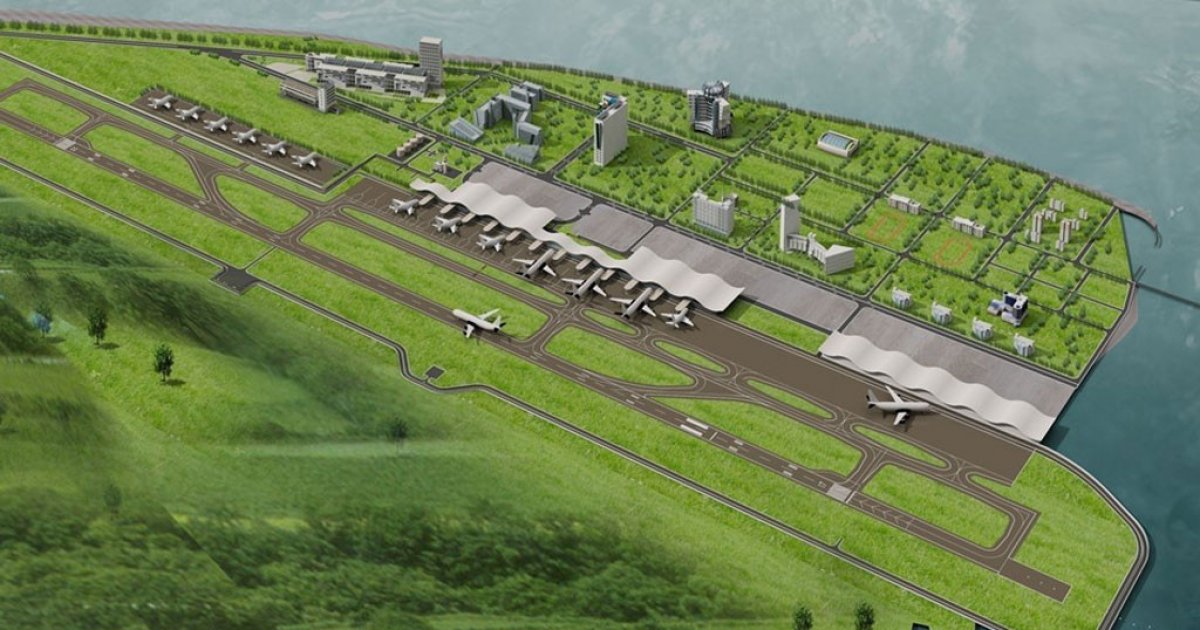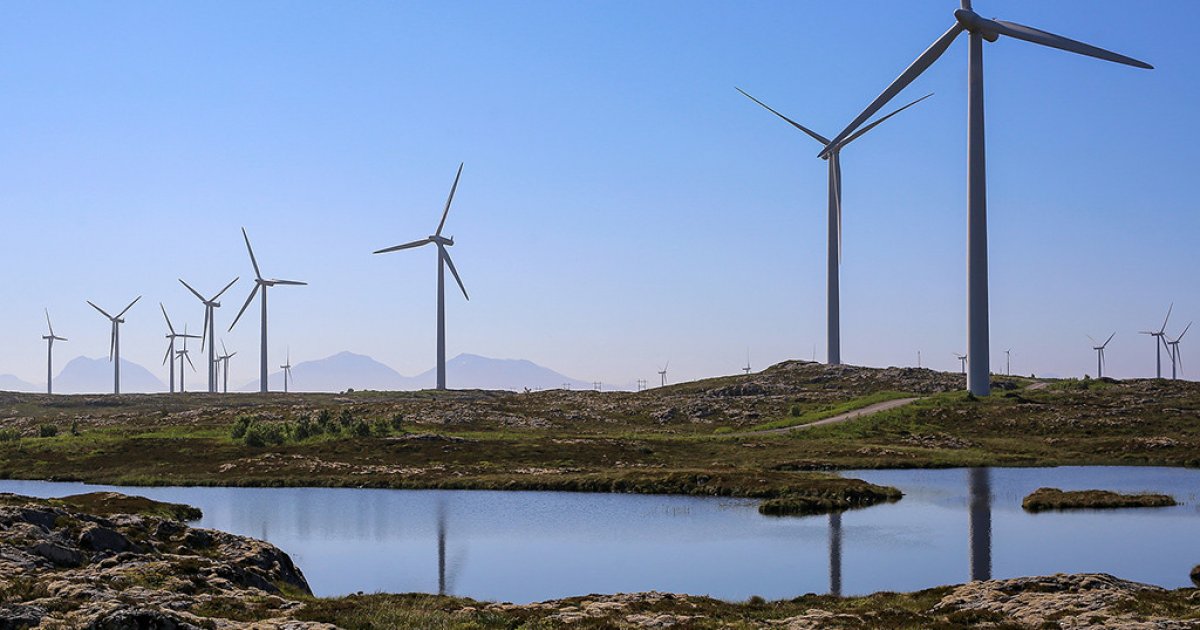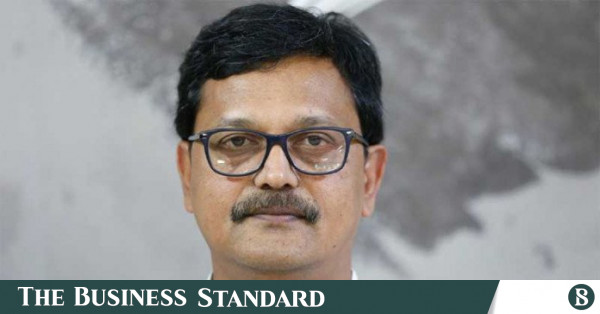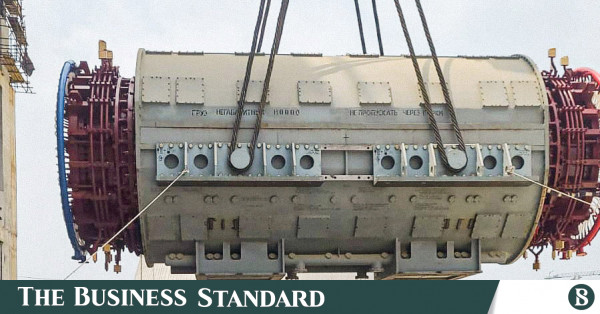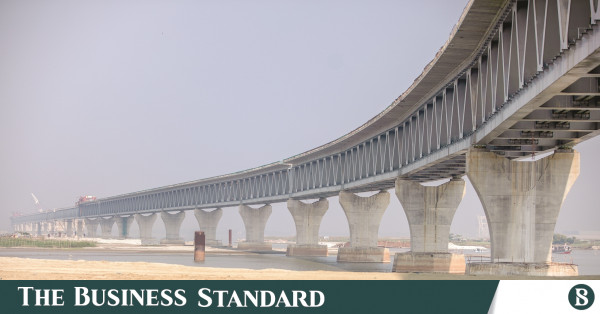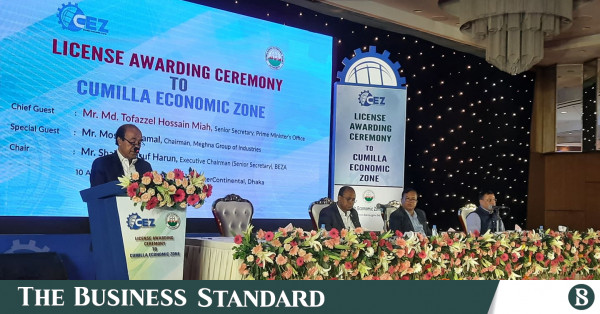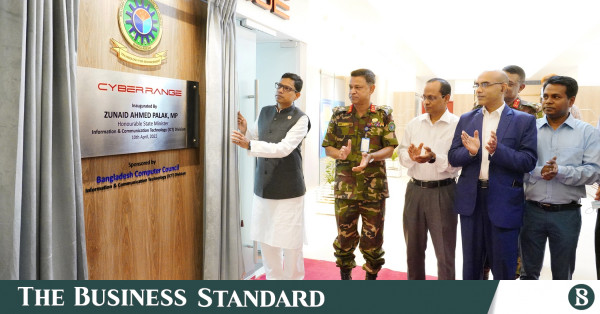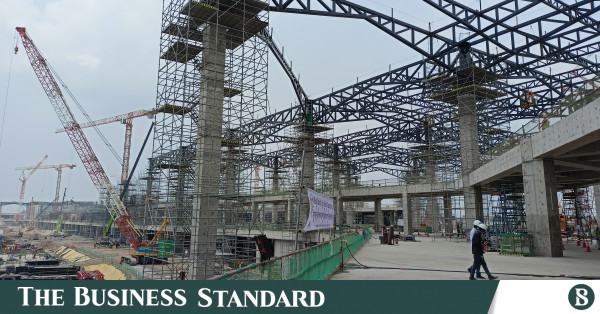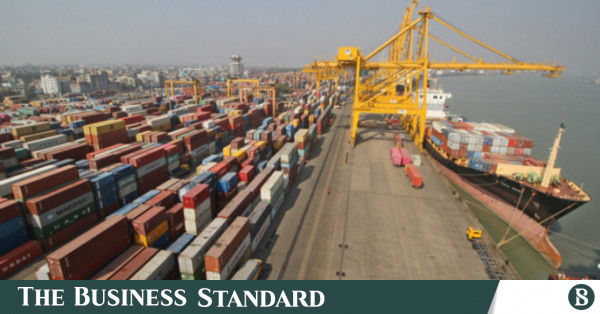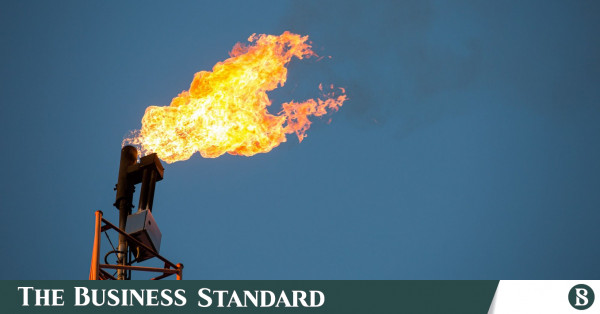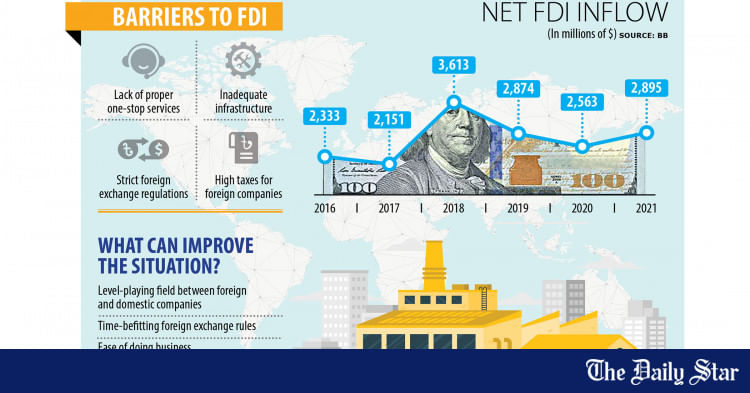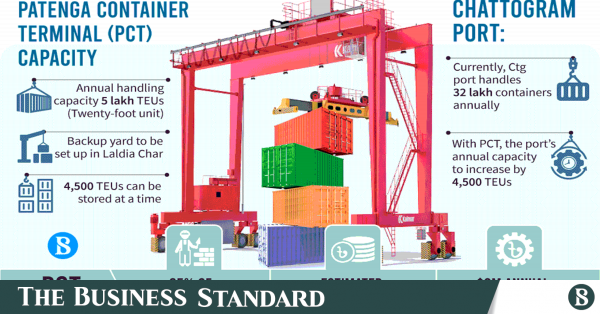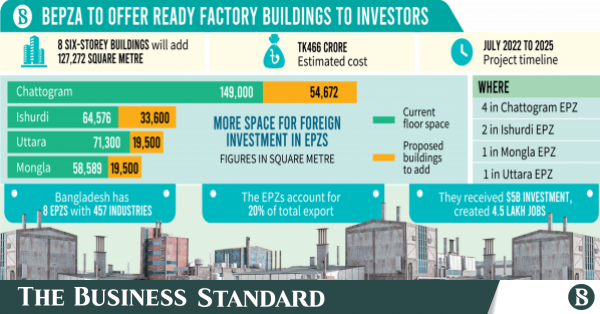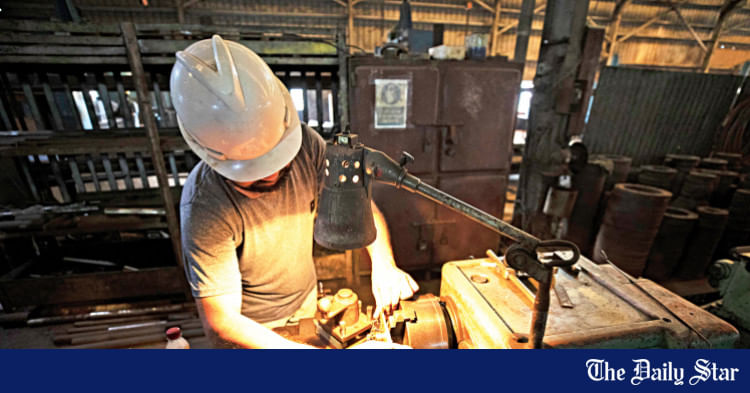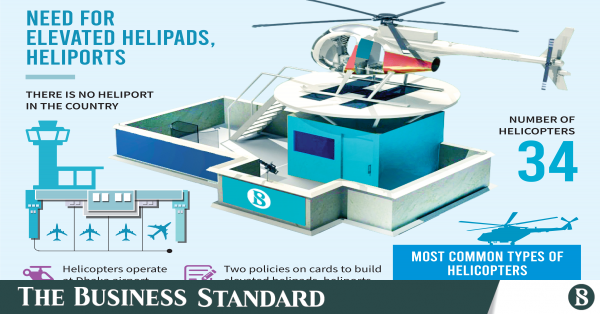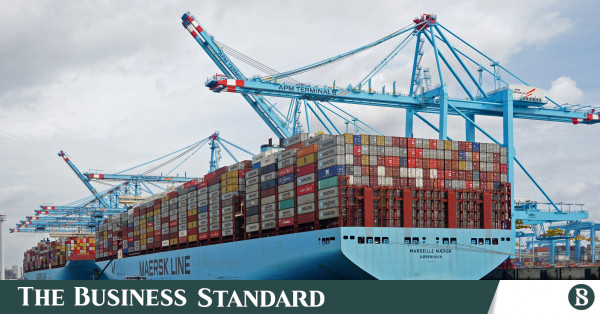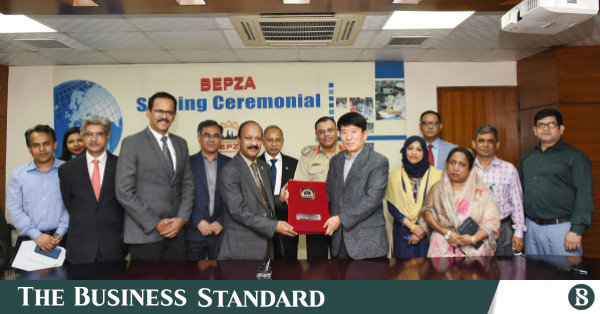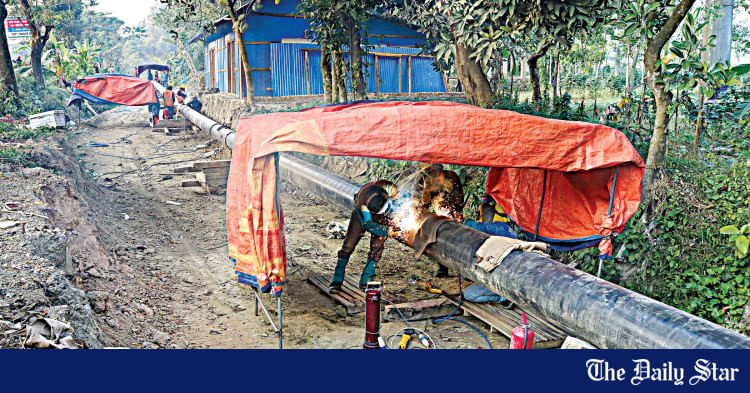Asian Motorbikes Ltd, the distributor of Japanese Kawasaki motorcycles in Bangladesh, has been allowed to locally manufacture motorcycles with up to 500 cubic centimetre (cc).
The industries ministry approved the second such nod for big bike manufacturing plants in the country, to Asian Motorbikes on Sunday.
Earlier, the government approved Ifad Motors to manufacture Royal Enfield bikes in October last year.
The move comes amid growing market demand for stronger motorcycles and an increasing interest of two-wheeler investors. The government is also amending its import policy order, which currently bars any import of motorcycles having over 165 cc engine, and their parts or raw materials.
According to the draft of the upcoming order, raw material and parts to locally manufacture up to 500 cc motorcycles can be imported into the country. However, completely built bikes over 165 cc engines cannot be imported.
Motorcycle manufacturers welcomed the much-delayed government moves to come out of the bizarre restriction on motorcycle engine capacity, which is only seen in Sri Lanka other than Bangladesh.
But, confusion remains regarding local road permits for 500 cc bikes and which is yet to be reformed.
Biplob Kumar Roy, chief executive officer of TVS Auto Bangladesh, the second-highest seller of two-wheelers in the country among the Indian makes, told The Business Standard, "The answer of the question regarding local market sales should be clear before we invest in manufacturing facilities for higher cc bikes."
Safat Ishtiaq, head of operations of Asian Motorbikes, on the other hand, thinks that if the import policy order sticks to its draft, local market sales would be possible there as soon as the approved companies can launch locally manufactured higher cc bikes.
"Having a great degree of assurance from the government regarding local road permits we decided to pursue the plans for investment in the factory and technical collaboration with our principal Kawasaki Heavy Industries of Japan," he said.
"We are waiting for the draft import policy order to be finalised and published, before entering the collaboration agreement," he said.
He believes the import policy order is the key that has been dictating the relevant state authorities' stance regarding motorcycle capacity, registration, and road permits.
When the import policy order increased the motorcycle cubic capacity limit to 165 from 155 four-five years back, nothing else was needed for the BRTA to register the bikes.
However, industry executives said, investments in manufacturing bikes with higher cubic capacity solely for export is not feasible in Bangladesh as the manufacturing ecosystem is still far from being competitive, in comparison with the regional two-wheeler export giants including India, Thailand and Indonesia.
Bangladeshi factories can achieve competitiveness only after they thrive in the local market, they said.
Safat Ishtiaq said Asian Motorbikes has secured a 10-acre industrial plot at Bangabandhu Sheikh Mujib Shilpa Nagar in Chattogram.
The company aims to go into production by mid-2023.
Meanwhile, Ifad Motors also is building its Royal Enfield manufacturing plant in Bangabandhu Sheikh Mujib Shilpa Nagar with a target to begin production by next year.
Suzuki, Runner and a few other brands are also in the cue to come up with their higher cc motorcycles in Bangladesh.

 www.tbsnews.net
www.tbsnews.net
The government on Tuesday signed an agreement with South Korea for constructing a bridge over the Payra River on Kachua-Betagi-Patuakhali-Lohaliya-Kalaiya road, a much-awaited project demanded by locals.
On behalf of their respective sides, Korean Sum Hoyan Corporation and Mir Akhter Joint Venture of Bangladesh signed the agreement at Setu Bhaban in Dhaka.
Road Transport and Bridges Minister Obaidul Quader was also present at the deal signing ceremony.
Speaking as the chief guest, Quader said the Payra Bridge is set to be constructed at a cost of Tk1,042 crore and it is expected to be completed by 2025.
He said Shirshendu Biswas, a fourth grader of Patuakhali, wrote a letter to Prime Minister Sheikh Hasina requesting her to construct a bridge over the Payra River.
In response to the letter, the premier directed the authorities concerned to take necessary steps to this end, the minister said.
Quader mentioned that the response of the Bangabandhu's daughter to the letter has proved that Sheikh Hasina is the symbol of Bangalees' confidence and it will remain as an instance in the history of Bangladesh.
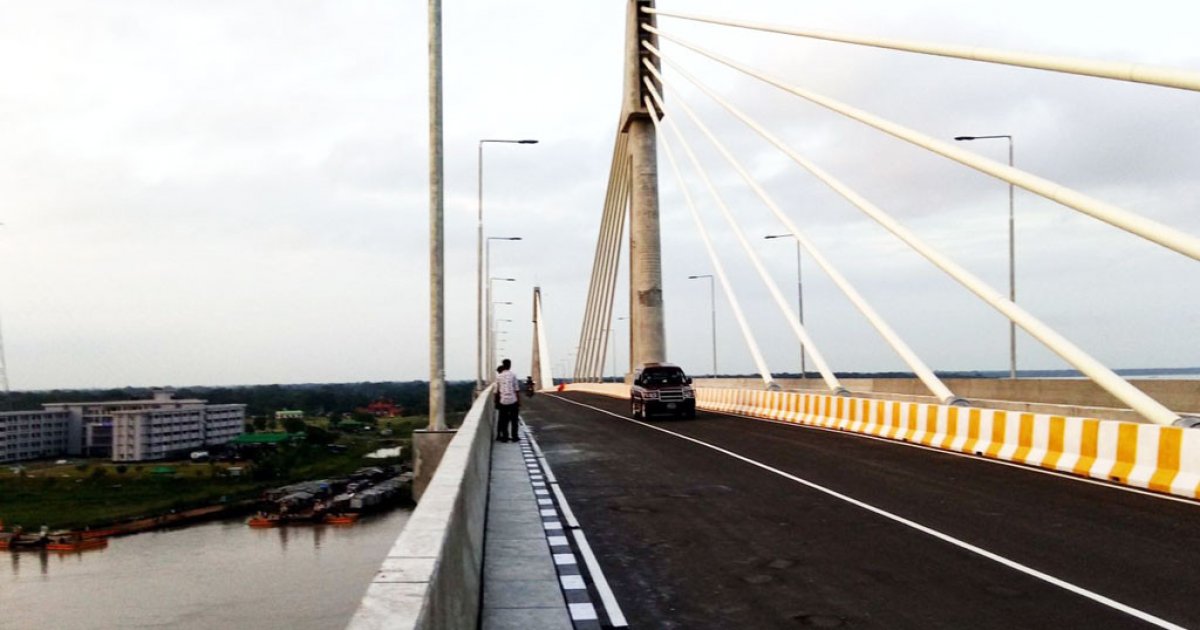
 www.dhakatribune.com
www.dhakatribune.com
Bangladesh Railways will purchase 200 units of broad gauge (BG) passenger carriages to replace old carriages which have lost their economic life.
The new carriages would be helpful to meet the growing demand to operate new trains after the inception of the Padma Bridge and the Jamuna Rail Bridge.
The Executive Committee of the National Economic Council (Ecnec) approved a project in this regard on Tuesday with an estimated cost of Tk1,704.34 crore. The European Investment Bank (EIB) would provide Tk1,331.20 crore loan support to implement the project, said Planning Minister MA Mannan at a press briefing following the meeting.
The Ecnec meeting was held at the NEC auditorium at Sher-e-Bangla Nagar in the capital. Prime Minister Sheikh Hasina presided over the meeting joining virtually from her official Ganobhaban residence.
The planning minister said the Ecnec approved a total of 12 projects with an estimated cost of Tk15,744 crore. Among the projects, 11 are fresh ones and another one is the first revision of an ongoing project. Tk1,1675 crore will be funded from the government exchequer and Tk4,068 crore will be collected from foreign sources.
MA Mannan said 200 new carriages are being procured for the development of passenger services of the broad gauge and dual gauge sections of the Rajshahi, Khulna and Rangpur divisions of the railways. The project deadline has been fixed till June 2025.
The objectives of the project are to provide modern, safe and comfortable services to the passengers as well as to operate trains on new routes, replace old passenger carriages and increase the revenue of Bangladesh Railways to meet the increasing passenger demand.
According to the project proposal, the railway currently has 467 broad gauge carriages but the economic life of 276 has come to an end. With the opening of Padma Bridge and Jamuna Rail Bridge, additional trains will be operated in the western and eastern parts of the railway. Apart from that, rail communication with neighboring countries will also increase. Moreover, additional carriages will be required when broad gauge trains are introduced in the whole country as per the master plan of Bangladesh Railway.
The railways will need 400 broad gauge carriages in the next two to four years. To meet the urgent need in the initial stage, 200 carriages are being procured. More carriages would be procured in the future if necessary, the planning minister added.
The Ecnec meeting also approved a Tk2,555.25 crore project to enhance the capacity of the urban local government bodies in their recovery from the Covid-19 pandemic as well as to strengthen their preparedness in facing such a situation in the future.
The planning minister said the Local Government Division will implement the "Local Government Covid-19 Response and Recovery (LGCRR)" project to improve the services of 10 city corporations and 329 pourasabhas. The project would provide cash assistance to these local government bodies to meet the financial crises created by the pandemic.
Out of the total project cost, the government will provide Tk11.25 crore while the rest Tk2,544 crore will come from the International Development Association (IDA) of the World Bank.
The aim of the project is to strengthen urban local government institutions for responding to the Covid pandemic and improve preparedness to future shocks benefitting about 40 million urban residents.
It will create 1.5 million days of temporary work as well as employment for 10,000 women under the public work scheme. The project will also help the local government institutions to improve preparedness for climate impacts, disasters and future disease outbreaks.
The other projects approved in the meeting are supplying water through harvesting of rainwater in coastal districts with Tk961.76 crore; establishment of air force training institute at Zohurul Haque Base in Chattogram, 1st revised with an additional cost of Tk140.42 crore; a project for improvement of governance and management research and training facilities with Tk228.08 crore; upgrading three regional highways and three district highways under Naogaon Road Department with Tk1182.49 crore; establishment of external telecommunication network for Rooppur Nuclear Power Plant with Tk378.84 crore; and establishment of seed multiplication farm at the southeastern region of Bangladesh with Tk438.93 crore.
The other approved projects are an expansion of irrigation area and irrigation capacity through expansion of underground irrigation channels and introduction of drip irrigation system on a test basis with Tk329.01 crore; improvement of universal social infrastructures-2 (GSIDP-2) with Tk1082 crore; construction of important bridges on rural roads, 2nd phase, with Tk4,050 crore and important upazila and union road widening and strengthening in Barishal Division with Tk2,693.43 crore.
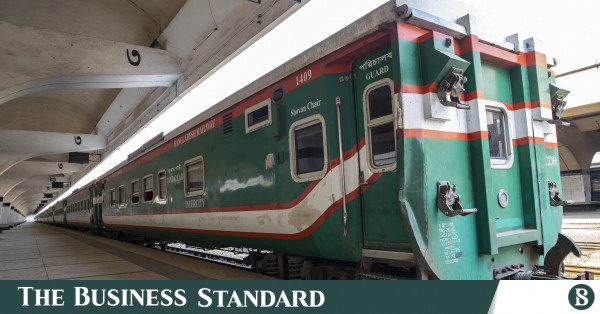
 www.tbsnews.net
www.tbsnews.net
The Executive Committee of National Economic Council (Ecnec) on Tuesday approved 12 development projects involving Tk15,745 crore including five for improving the rural infrastructures in the country.
The approval came from the Ecnec meeting with Ecnec chairperson and Prime Minister Sheikh Hasina, who joined it virtually from her official residence Ganobhaban, in chair.
Other ministers and officials concerned were connected with the virtual meeting from the Conference Room of the Planning Commission in the city.
"Today the meeting approved 12 projects with an overall estimated cost of Tk15,744.56 crore," said Planning Minister MA Mannan while briefing reporters after the meeting.
Of the total cost, Tk11,674.83 crore will be drawn from the government's fund, while Tk4,068 crore from external sources as foreign loan and Tk1.20 crore from the own fund of the organisations concerned, he said.
The five projects placed by the Local Government Division will cost Tk11,342 crore.
The five projects are Construction of Important Bridges On Rural Roads (Phase-II) with estimated cost of Tk4,050 crore, Widening and Strengthening Upazila and Union-Level Important Roads in Barishal Division with Tk2,693.435 crore, Local Government Covid-19 Response and Recovery (LGCRR) involving Tk2555.25 crore, Water Supply through Rainwater Harvesting in Coastal Districts with Tk961.755 crore and Universal Social Infrastructure Development-2 with Tk1,082 crore.
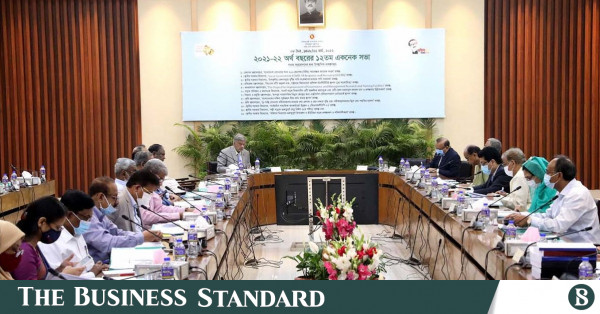
 www.tbsnews.net
www.tbsnews.net
The industries ministry approved the second such nod for big bike manufacturing plants in the country, to Asian Motorbikes on Sunday.
Earlier, the government approved Ifad Motors to manufacture Royal Enfield bikes in October last year.
The move comes amid growing market demand for stronger motorcycles and an increasing interest of two-wheeler investors. The government is also amending its import policy order, which currently bars any import of motorcycles having over 165 cc engine, and their parts or raw materials.
According to the draft of the upcoming order, raw material and parts to locally manufacture up to 500 cc motorcycles can be imported into the country. However, completely built bikes over 165 cc engines cannot be imported.
Motorcycle manufacturers welcomed the much-delayed government moves to come out of the bizarre restriction on motorcycle engine capacity, which is only seen in Sri Lanka other than Bangladesh.
But, confusion remains regarding local road permits for 500 cc bikes and which is yet to be reformed.
Biplob Kumar Roy, chief executive officer of TVS Auto Bangladesh, the second-highest seller of two-wheelers in the country among the Indian makes, told The Business Standard, "The answer of the question regarding local market sales should be clear before we invest in manufacturing facilities for higher cc bikes."
Safat Ishtiaq, head of operations of Asian Motorbikes, on the other hand, thinks that if the import policy order sticks to its draft, local market sales would be possible there as soon as the approved companies can launch locally manufactured higher cc bikes.
"Having a great degree of assurance from the government regarding local road permits we decided to pursue the plans for investment in the factory and technical collaboration with our principal Kawasaki Heavy Industries of Japan," he said.
"We are waiting for the draft import policy order to be finalised and published, before entering the collaboration agreement," he said.
He believes the import policy order is the key that has been dictating the relevant state authorities' stance regarding motorcycle capacity, registration, and road permits.
When the import policy order increased the motorcycle cubic capacity limit to 165 from 155 four-five years back, nothing else was needed for the BRTA to register the bikes.
However, industry executives said, investments in manufacturing bikes with higher cubic capacity solely for export is not feasible in Bangladesh as the manufacturing ecosystem is still far from being competitive, in comparison with the regional two-wheeler export giants including India, Thailand and Indonesia.
Bangladeshi factories can achieve competitiveness only after they thrive in the local market, they said.
Safat Ishtiaq said Asian Motorbikes has secured a 10-acre industrial plot at Bangabandhu Sheikh Mujib Shilpa Nagar in Chattogram.
The company aims to go into production by mid-2023.
Meanwhile, Ifad Motors also is building its Royal Enfield manufacturing plant in Bangabandhu Sheikh Mujib Shilpa Nagar with a target to begin production by next year.
Suzuki, Runner and a few other brands are also in the cue to come up with their higher cc motorcycles in Bangladesh.

Asian Motorbikes allowed to manufacture 500cc Kawasaki motorcycles
The move comes amid growing market demand for stronger motorcycles and an increasing interest of two-wheeler investors
The government on Tuesday signed an agreement with South Korea for constructing a bridge over the Payra River on Kachua-Betagi-Patuakhali-Lohaliya-Kalaiya road, a much-awaited project demanded by locals.
On behalf of their respective sides, Korean Sum Hoyan Corporation and Mir Akhter Joint Venture of Bangladesh signed the agreement at Setu Bhaban in Dhaka.
Road Transport and Bridges Minister Obaidul Quader was also present at the deal signing ceremony.
Speaking as the chief guest, Quader said the Payra Bridge is set to be constructed at a cost of Tk1,042 crore and it is expected to be completed by 2025.
He said Shirshendu Biswas, a fourth grader of Patuakhali, wrote a letter to Prime Minister Sheikh Hasina requesting her to construct a bridge over the Payra River.
In response to the letter, the premier directed the authorities concerned to take necessary steps to this end, the minister said.
Quader mentioned that the response of the Bangabandhu's daughter to the letter has proved that Sheikh Hasina is the symbol of Bangalees' confidence and it will remain as an instance in the history of Bangladesh.

Korean firm to construct bridge over Payra River
Construction of the 1,042-crore bridge is expected to be completed by 2025
Bangladesh Railways will purchase 200 units of broad gauge (BG) passenger carriages to replace old carriages which have lost their economic life.
The new carriages would be helpful to meet the growing demand to operate new trains after the inception of the Padma Bridge and the Jamuna Rail Bridge.
The Executive Committee of the National Economic Council (Ecnec) approved a project in this regard on Tuesday with an estimated cost of Tk1,704.34 crore. The European Investment Bank (EIB) would provide Tk1,331.20 crore loan support to implement the project, said Planning Minister MA Mannan at a press briefing following the meeting.
The Ecnec meeting was held at the NEC auditorium at Sher-e-Bangla Nagar in the capital. Prime Minister Sheikh Hasina presided over the meeting joining virtually from her official Ganobhaban residence.
The planning minister said the Ecnec approved a total of 12 projects with an estimated cost of Tk15,744 crore. Among the projects, 11 are fresh ones and another one is the first revision of an ongoing project. Tk1,1675 crore will be funded from the government exchequer and Tk4,068 crore will be collected from foreign sources.
MA Mannan said 200 new carriages are being procured for the development of passenger services of the broad gauge and dual gauge sections of the Rajshahi, Khulna and Rangpur divisions of the railways. The project deadline has been fixed till June 2025.
The objectives of the project are to provide modern, safe and comfortable services to the passengers as well as to operate trains on new routes, replace old passenger carriages and increase the revenue of Bangladesh Railways to meet the increasing passenger demand.
According to the project proposal, the railway currently has 467 broad gauge carriages but the economic life of 276 has come to an end. With the opening of Padma Bridge and Jamuna Rail Bridge, additional trains will be operated in the western and eastern parts of the railway. Apart from that, rail communication with neighboring countries will also increase. Moreover, additional carriages will be required when broad gauge trains are introduced in the whole country as per the master plan of Bangladesh Railway.
The railways will need 400 broad gauge carriages in the next two to four years. To meet the urgent need in the initial stage, 200 carriages are being procured. More carriages would be procured in the future if necessary, the planning minister added.
The Ecnec meeting also approved a Tk2,555.25 crore project to enhance the capacity of the urban local government bodies in their recovery from the Covid-19 pandemic as well as to strengthen their preparedness in facing such a situation in the future.
The planning minister said the Local Government Division will implement the "Local Government Covid-19 Response and Recovery (LGCRR)" project to improve the services of 10 city corporations and 329 pourasabhas. The project would provide cash assistance to these local government bodies to meet the financial crises created by the pandemic.
Out of the total project cost, the government will provide Tk11.25 crore while the rest Tk2,544 crore will come from the International Development Association (IDA) of the World Bank.
The aim of the project is to strengthen urban local government institutions for responding to the Covid pandemic and improve preparedness to future shocks benefitting about 40 million urban residents.
It will create 1.5 million days of temporary work as well as employment for 10,000 women under the public work scheme. The project will also help the local government institutions to improve preparedness for climate impacts, disasters and future disease outbreaks.
The other projects approved in the meeting are supplying water through harvesting of rainwater in coastal districts with Tk961.76 crore; establishment of air force training institute at Zohurul Haque Base in Chattogram, 1st revised with an additional cost of Tk140.42 crore; a project for improvement of governance and management research and training facilities with Tk228.08 crore; upgrading three regional highways and three district highways under Naogaon Road Department with Tk1182.49 crore; establishment of external telecommunication network for Rooppur Nuclear Power Plant with Tk378.84 crore; and establishment of seed multiplication farm at the southeastern region of Bangladesh with Tk438.93 crore.
The other approved projects are an expansion of irrigation area and irrigation capacity through expansion of underground irrigation channels and introduction of drip irrigation system on a test basis with Tk329.01 crore; improvement of universal social infrastructures-2 (GSIDP-2) with Tk1082 crore; construction of important bridges on rural roads, 2nd phase, with Tk4,050 crore and important upazila and union road widening and strengthening in Barishal Division with Tk2,693.43 crore.

Railway to purchase 200 BG carriages
Ecnec approves 12 projects with an estimated cost of Tk15,744cr
The Executive Committee of National Economic Council (Ecnec) on Tuesday approved 12 development projects involving Tk15,745 crore including five for improving the rural infrastructures in the country.
The approval came from the Ecnec meeting with Ecnec chairperson and Prime Minister Sheikh Hasina, who joined it virtually from her official residence Ganobhaban, in chair.
Other ministers and officials concerned were connected with the virtual meeting from the Conference Room of the Planning Commission in the city.
"Today the meeting approved 12 projects with an overall estimated cost of Tk15,744.56 crore," said Planning Minister MA Mannan while briefing reporters after the meeting.
Of the total cost, Tk11,674.83 crore will be drawn from the government's fund, while Tk4,068 crore from external sources as foreign loan and Tk1.20 crore from the own fund of the organisations concerned, he said.
The five projects placed by the Local Government Division will cost Tk11,342 crore.
The five projects are Construction of Important Bridges On Rural Roads (Phase-II) with estimated cost of Tk4,050 crore, Widening and Strengthening Upazila and Union-Level Important Roads in Barishal Division with Tk2,693.435 crore, Local Government Covid-19 Response and Recovery (LGCRR) involving Tk2555.25 crore, Water Supply through Rainwater Harvesting in Coastal Districts with Tk961.755 crore and Universal Social Infrastructure Development-2 with Tk1,082 crore.

5 projects for developing rural infrastructures get Ecnec nod
Total 12 projects involving Tk 15,745 crore approved
Last edited:



